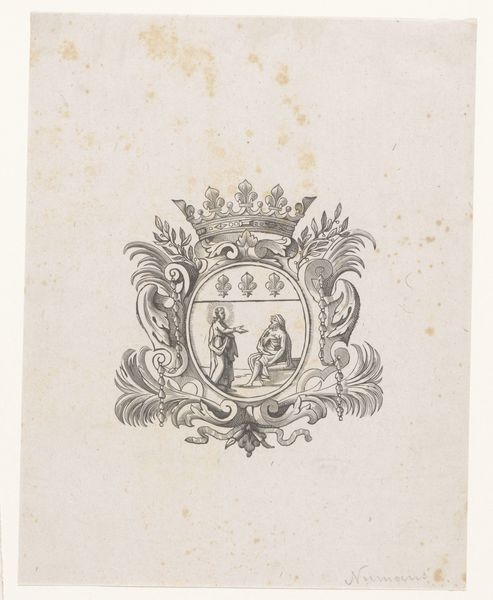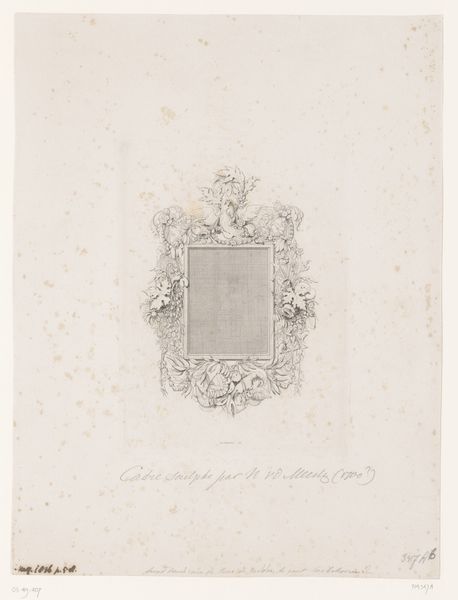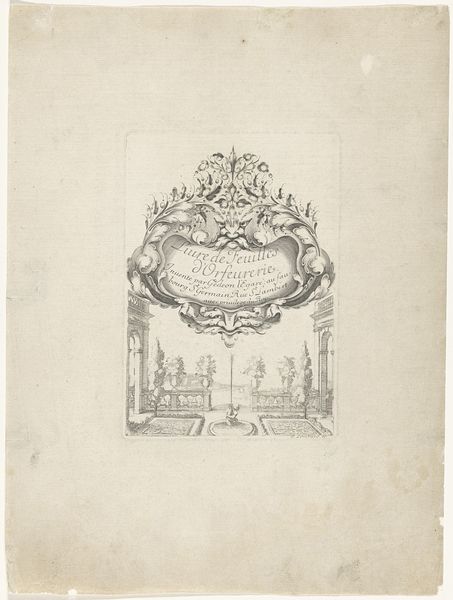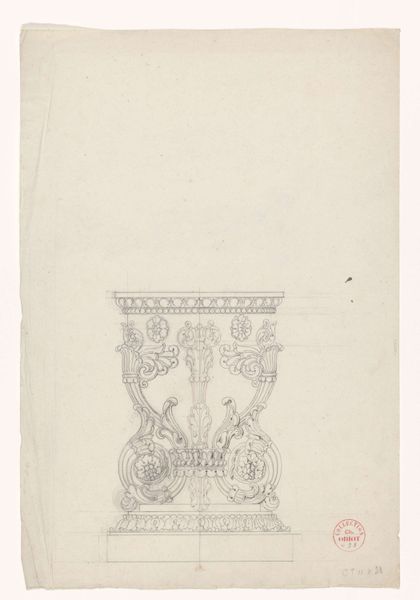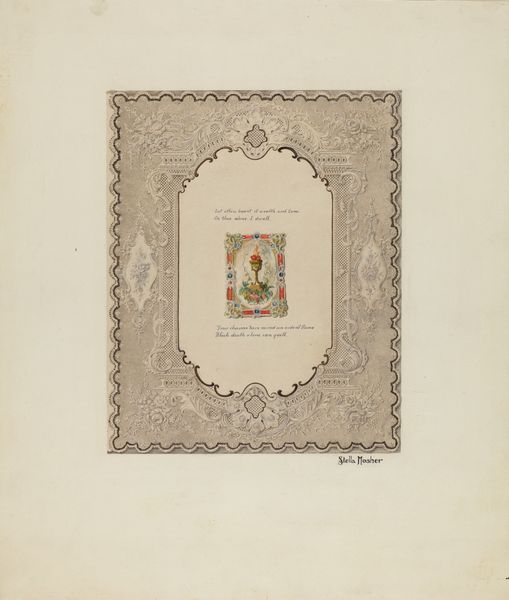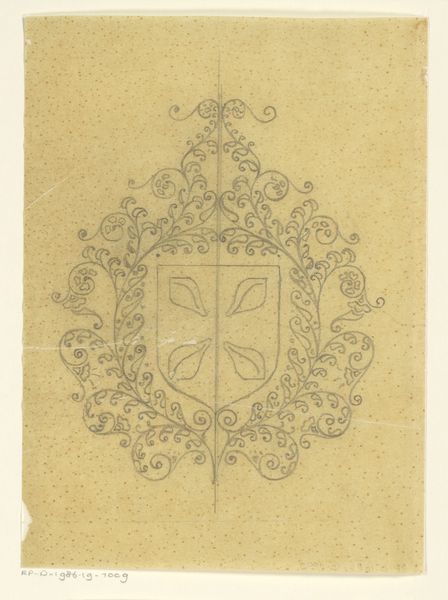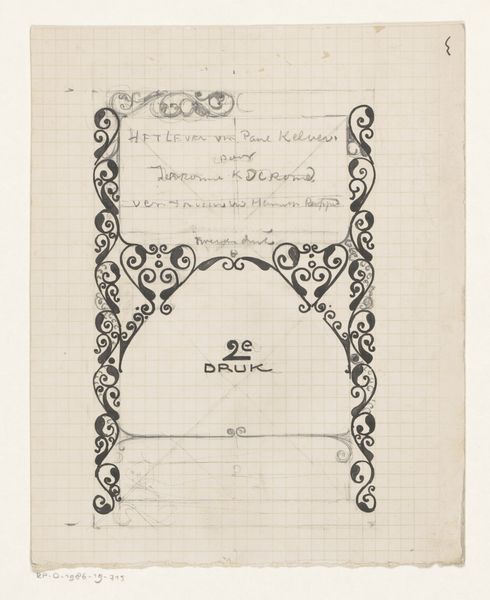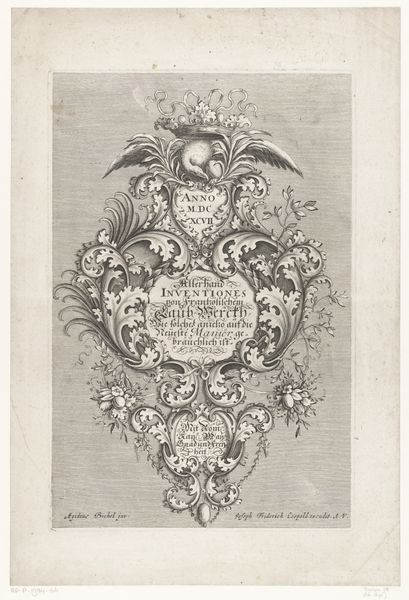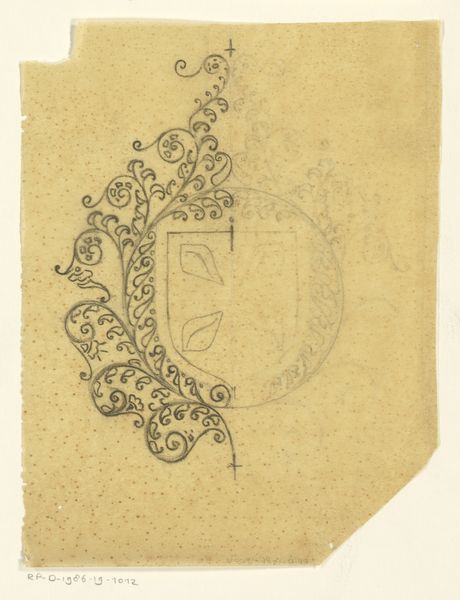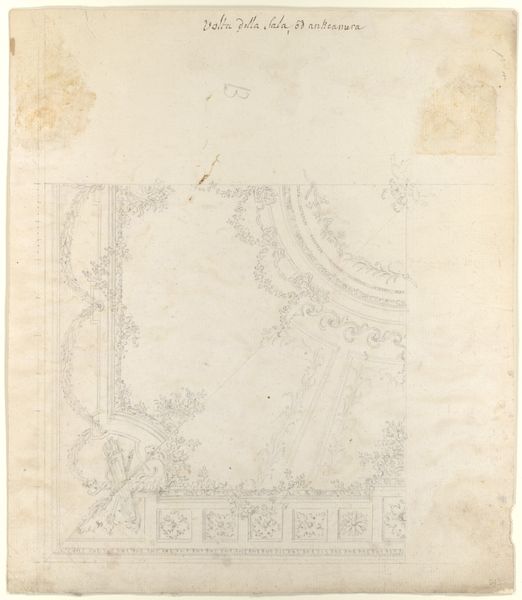
Dimensions: height 270 mm, width 154 mm
Copyright: Rijks Museum: Open Domain
Editor: This is "Ornamentele lijst met florale motieven, een vogel en schaaldieren" by Auguste Numans, dating from 1833 to 1879. It's an etching and engraving, so mostly lines, and quite delicate, wouldn't you say? It almost has a dreamlike quality, perhaps even melancholic. What do you make of it? Curator: Dreamlike is a good starting point. Consider the era: Romanticism. We see a fascination with nature, but it's not just celebratory. The depiction, the controlled, almost taxonomic approach, clashes with the abundance suggested by the flora and fauna. Editor: Taxonomic, that’s an interesting take! So, instead of just seeing pretty flowers and a bird, you see a commentary? Curator: Precisely. This ornamental border, presumably for a print, encapsulates the societal urge to categorize and contain the natural world, driven by colonial expansion and scientific ambition of the 19th century. Note the detailed rendering. Is this genuine admiration, or a controlling gaze? The very act of framing nature... Editor: So, the bird and shellfish, almost seem trapped within the ornate design, not celebrated? Is there a tension between art and science? Curator: A delicious tension. Consider also the implications of reproduction – etching and engraving enable the mass dissemination of this framed, controlled vision of nature. How might this shape public perception and reinforce hierarchical power dynamics? Whose vision are we seeing and whose voices are absent? Editor: Wow, I never would have considered all of that just by looking at it! Now I see this detailed border less as a pretty frame and more as a lens that distorts our view of nature. Curator: Exactly! Art is never neutral. Considering historical context allows us to see the multiple layers of meaning embedded within seemingly simple images.
Comments
No comments
Be the first to comment and join the conversation on the ultimate creative platform.
